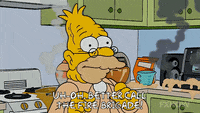Hi folks, a newbie here...
Live in the northeast, cold! I have been told by an old salty dog of a captain that I can successfully strip my teak on the Grand Banks, do my sanding to prep the wood and then apply the varnish during the winter month (outdoor storage). Any thoughts on doing this kind of work during winter months?
If so, what have you found as the most durable products in this kind of situation?
I was told that I could cut the first few coats 70/30v, 50/50v, 25/75v..then straight varnish. Of course i would have to warm up the varnish in the microwave for a few seconds...Do you think someone is puling my leg?
Thanks for any comments.
Live in the northeast, cold! I have been told by an old salty dog of a captain that I can successfully strip my teak on the Grand Banks, do my sanding to prep the wood and then apply the varnish during the winter month (outdoor storage). Any thoughts on doing this kind of work during winter months?
If so, what have you found as the most durable products in this kind of situation?
I was told that I could cut the first few coats 70/30v, 50/50v, 25/75v..then straight varnish. Of course i would have to warm up the varnish in the microwave for a few seconds...Do you think someone is puling my leg?
Thanks for any comments.


